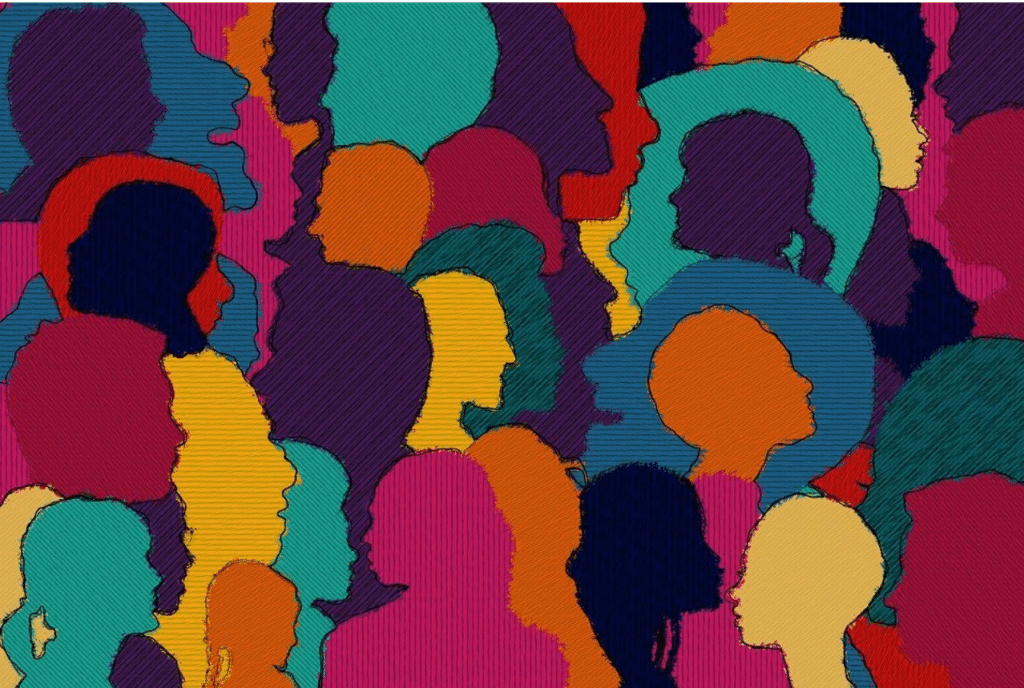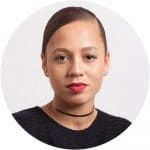One size does not fit all: Why diversity and inclusion efforts fail in the nuclear community, and what can be done about it
By Mareena Robinson Snowden | January 6, 2021

Following the uprisings across the country reignited by the vicious killings of George Floyd, Breonna Taylor, and Ahmaud Arbery, organizations across industry, academia, the military, and government have been assessing their proximity and role in upholding structures of systemic and institutional racism. The nuclear community has not been exempt. Since the height of the uprisings in June, panel after panel and article after article wrestled with the how the nuclear community should show up in this moment. There have been statements of sympathy and solidarity as well as reflections on racism and injustice in the field.
Yet, in the midst of it all, I can’t help but wonder if these outward displays of energy will amount to any discernable and sustainable progress in the long term. Understanding the long history of violence toward Black and Brown bodies, against the backdrop of decades of broad US investment in diversity and inclusion efforts that have done little to affect the reality of those same communities, what cause is there to be hopeful this time for long-term change?
Our efforts to increase the representation of communities of color in the nuclear field have failed because our organizing principle has been wrong: A rising tide does not lift all boats equally. One-size-fits-all diversity and inclusion solutions do not work, particularly when aiming to address the experience of Black people in nuclear spaces. If there is to be any hope of having a different conversation about representation and culture in the nuclear field 30 years from now, and actually realizing the goal of greater diversity and inclusion, it will require acknowledgement of this failed frame and a radical shift in approach to one that is nuanced, proactive, and specifically focused on the margins.
Understanding racism in the nuclear field. A powerful article previously published in the Bulletin entitled “A call for anti-racist action and accountability in the US nuclear community” provides a simple, yet comprehensive frame to begin to understand how racism manifests in the field in concrete and devastating ways that exclude people of color.
Racism in the nuclear field manifests in two main ways, its substance and its form. The infrastructure of the nuclear field—across military planning, energy, arms control, and disarmament—was built under the shadow of colonialism, Jim Crow, and racial hierarchies that placed people of color, and specifically women of color, at the bottom of the ladder. Such infrastructure ranges from a nonproliferation governance system that installs a select few from a very narrow demographic as the responsible stewards of nuclear technology, to physical spaces like plutonium production plants, uranium mines, and nuclear weapon testing facilities. To believe that this infrastructure would not be influenced by the racial context of its time is entirely unrealistic.
The same goes for the form of the field, including who is and is not seen as a credible voice in the analysis and critique of nuclear issues. The authors of the Bulletin article discuss the mechanisms that work to maintain the status quo in favor of the majority within nuclear institutions. From the very earliest stages of professional development in the nuclear field, a select few generally white and male gatekeepers define the attributes of a credible voice in their own image. These definitions of who “fits the mold” not only span gender, race, and socio-economic status, but also alma mater and professional trajectory. Indeed, the benign, seemingly passive metric of “seeing yourself” in an applicant can be a key driver to the preservation of the existing racially inequitable status quo.
To continue the call for institutional progress does not inherently invalidate the progress made thus far. Across a range of communities, whether engineering or the social sciences, academia or industry, early career, mid-career, or senior levels, there have been bright spots of progress, specifically when diversity is defined in terms of gender. After years of strategic investment, elite institutions like MIT and Harvard have achieved near gender parity in their undergraduate ranks. Although women continue to be egregiously underrepresented in science, technology, engineering, and mathematics (STEM), particularly in fields like computer science, engineering, and the physical sciences, the overall percentage of women earning advanced degrees in technical fields allows for a more robust analysis of those trends. On the government side, the US think tank New America reported that the representation of women in the State Department workforce held steady at around 42 percent between 2002 and 2018.
While these numbers do not fully articulate the experience of women in these spaces, particularly around bias and harassment, a nuanced conversation about the experience of women in the workforce is able to be had because, in many sectors, women are gradually approaching the critical mass that is unfortunately needed to legitimize their presence in the eyes of leadership and their male colleagues. The idea of legitimacy in the eyes of the dominant demographic, the white male, is problematic for a variety of reasons. It is, however, the reality that underrepresented groups face within the national security field in general, and the nuclear field in particular.
With respect to incorporating communities of color, the nuclear field is nowhere near that critical mass and, in my mind, there is a clear reason why the mark has been consistently missed for decades.
Why diversity and inclusion efforts have failed in the nuclear community. Diversity and inclusion efforts in the nuclear field have failed communities of color, particularly Black folks, in part because the organizing principle is wrong. Conventional approaches to diversity and inclusion in the field have been based, consciously or unconsciously, on an assumption of “sameness” between underrepresented communities. Attempting to serve all unrepresented groups by designing initiatives toward the average of the distribution discounts “the historical patterns of exclusion, marginality, and disadvantage for each group,” as Laura Morgan Roberts and Anthony Mayo have written in the Harvard Business Review.
In a field long dominated by white men, the predominant minority identity among historically disadvantaged groups has been white women. It is thus no coincidence that white women have been the major beneficiaries of collective diversity and inclusion efforts in the national security field. Going forward, instead of defining outcomes in terms of the most in number, the nuclear field should shift its definition of success to improve representation of the most historically impacted groups, particularly Black and Brown communities.
Beyond the lack of specificity in the design of diversity and inclusion initiatives, the field’s methodology has been incomplete. Diversity and inclusion approaches can be binned into at least two categories—preventative and proactive. As Frank Dobbin and Alexandra Kalev describe in their article “Why Diversity Programs Fail,” organizations have long relied on “diversity training to reduce bias on the job, hiring tests and performance ratings to limit it in recruitment and promotions, and grievance systems to give employees a way to challenge managers.” However, as Dobbin and Kalev explain, these preventive tools are designed more to preempt lawsuits and protect the organization than they are to propel any one marginalized group forward or remedy past wrongs. As we all have likely observed in our own local environment, when these preventive measures make up the totality of an organization’s efforts on diversity and inclusion, they can work to increase bias rather than reduce it, as mandatory trainings that do little to address root causes of bias often lead to resentment in both majority and minority employee populations.
A radical shift toward proactivity and specificity. The one-size-fits-all design principle behind traditional diversity and inclusion efforts has limited our investment in the proactive tools that actually increase representation and improve company culture. Tools like climate surveys and exit interviews, when designed with the most marginalized identities in mind, can give organizations valuable insight into their true company culture and ideas for reform. Proactive practices that leverage data in the setting and tracking of strategic goals has also proven to be successful.
There is enthusiastic support for the use of data when discussing objectives not related to diversity and inclusion, for example capital campaigns to fund the operations of nonprofits. Explicit goals and target dates are set. Plans of action are designed complete with network engagement strategies and milestones, and an evaluation of progress against those goals is done to measure success. Beyond fundraising, elite institutions of higher education have implemented this practice to meet their strategic goals of gender parity at the undergraduate level. (It is worth noting that institutions of higher education, particularly in STEM, have not achieved gender parity in their graduate, faculty, or senior leadership ranks.) However, not in the 30 years since diversity and inclusion efforts became mainstream has this practice been used in a transparent and accountable way to benefit of communities of color, particularly Black folks, in nuclear spaces—or in any other spaces for that matter.
To lean into proactive diversity and inclusion mechanisms, we must reframe gathering data not as a threat to brands or bottom lines, but as the necessary first step in customizing diversity and inclusion efforts to the specific groups they are designed to impact in an organization. It is important to also note that data should not be limited to demographics. If equity is indeed the goal, qualitative data in the form of stories and experiences are of equal value. Without this subjective data garnered through interviews and surveys, which reveals how the organizational culture is experienced by underrepresented communities, the field runs the risk of exacerbating the “leaky pipeline.” The goal should be to understand the utility of these different data forms, and use them in service of substantive change in a way that respects the risks assumed by communities of color when they engage publicly on issues of bias and does not require people of color to relive their trauma publicly or compromise their privacy.
In a time when diversity and inclusion investments are at an all-time high across almost every sector, there must be reflection on what is not working. There should also be acknowledgement of the need for true interventions that focus on specific groups and are proactive in measurement and monitoring.
The positive news is there are already brave folks and organizations implementing this approach right now. In recent years, Gender Champions in Nuclear Policy developed a model encouraging organizational leaders to publicly pledge to address a very specific issue in the field of nuclear security—the “manel,” or all-male panel. Leaders pledged not to participate in single-gender panels and to be transparent about this expectation with event organizers. According to the organization’s 2019 Impact Report, the “panel parity pledge” almost immediately positively improved the public representation of women as experts in the field by focusing on this one specific obstacle to gender equity. How might this model be leveraged in service to communities of color in the nuclear field, in ways that lead to genuine inclusion and not tokenism or “box checking”?
Alongside accountability models like Gender Champions, there are professional development models for early career professionals of color that are ripe for application to the mid- and senior levels in the nuclear field, namely the Rangel and Pickering Fellowships for International Affairs and Foreign Service. These programs, founded in partnership with Howard University, were designed specifically with Black and Brown communities in mind. They provide financial compensation as well as necessary mentoring and community-building opportunities and explicitly acknowledge the financial constraints fellows of color experience that might otherwise preclude them for taking unpaid fellowships. Programs like Rangel and Pickering, alongside professional organizations like Women of Color Advancing Peace and Security, have a demonstrated record of success in large part because their mandate and target audience is very specific.
Some might argue that these early career programs are easier to execute because the needs from person to person appear similar. Resources on résumé writing, interviewing, networking, and negotiation are useful to almost every early career aspirant. The perception at the mid- and senior levels is that those needs are not as common or clearly defined. However, this is simply the perception. The truth is, the necessary diagnostic work has not been done to actually understand the needs of mid-level and senior professionals of color in the nuclear field, and if they are indeed disparate and undefined. In the absence of this analysis, we are missing a potential opportunity to address the unique needs of professionals of color seeking to advance and make an impact at the highest levels in their careers.
Fields like medicine, education, and agriculture have recognized the error in the one-size-fits-all model and are making investments in more precise interventions that are informed by qualitative and quantitative data. How might the nuclear field do the same, and do more to invest in solutions that are specific and proactive for communities of color? What are the discrete barriers blocking racial equity that we can ask our nonprofit, government, military, and technical leaders to publicly pledge to address? What does it look like to support Black and Brown scholars and practitioners throughout their nuclear careers and not just in the early career stage? These are the conversations the nuclear field should be having out in the open and with a bias toward proactive action. They are every bit as critical as topics that currently receive much more attention in the field. Without a radical shift in frame to better target interventions to improve outcomes for communities of color, I fear progress in the nuclear field over the next 30 years will be as painfully modest as the last.
Author’s note: The views expressed are the author’s own and do not represent the views of Johns Hopkins University or any other entity. This piece was reviewed and edited by Amb. Bonnie Jenkins, Dr. Joy Johnson, Dr. Aditi Verma, Dr. Denia Djokic, Lauryn Williams, Michelle Dover, and Eva Rennalls, to whom the author is deeply thankful.
Together, we make the world safer.
The Bulletin elevates expert voices above the noise. But as an independent nonprofit organization, our operations depend on the support of readers like you. Help us continue to deliver quality journalism that holds leaders accountable. Your support of our work at any level is important. In return, we promise our coverage will be understandable, influential, vigilant, solution-oriented, and fair-minded. Together we can make a difference.
Keywords: US nuclear policy, diversity, racism, women
Topics: Nuclear Risk, Opinion















